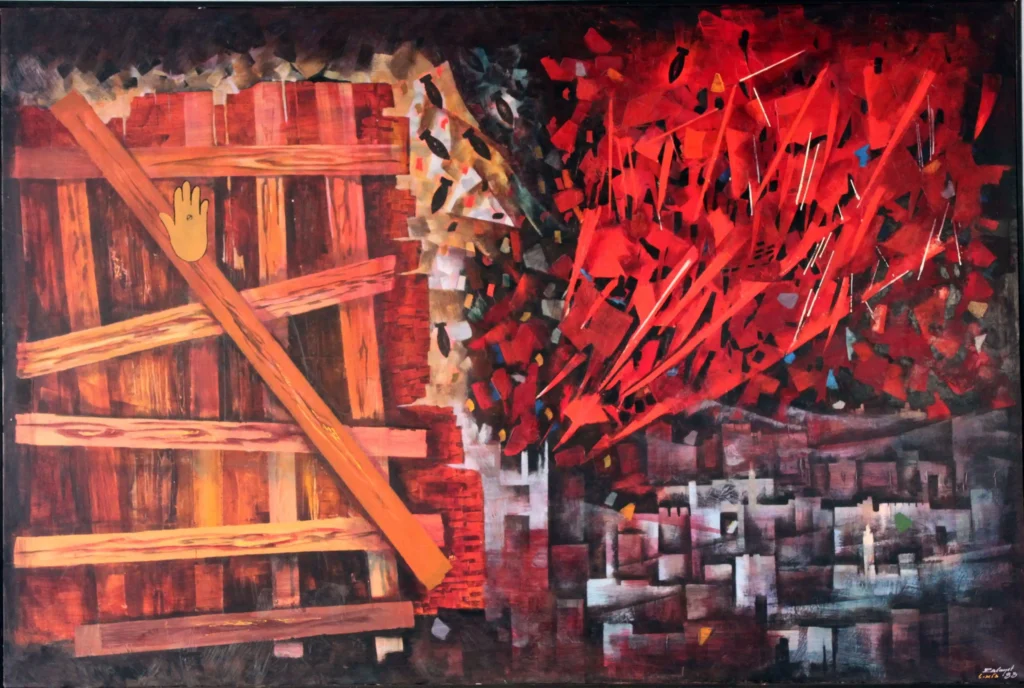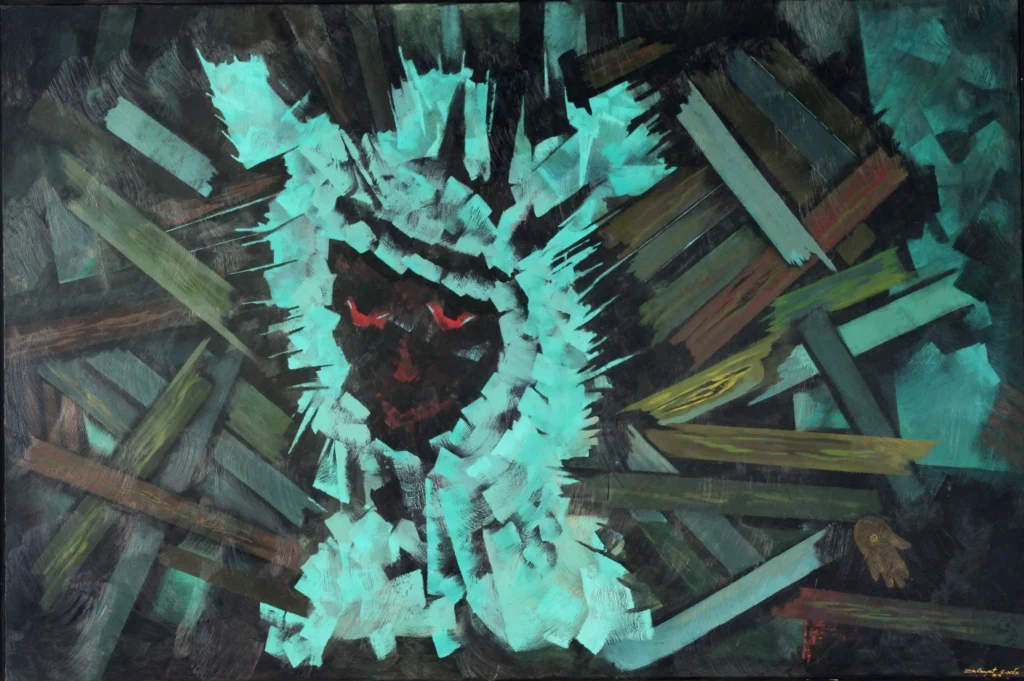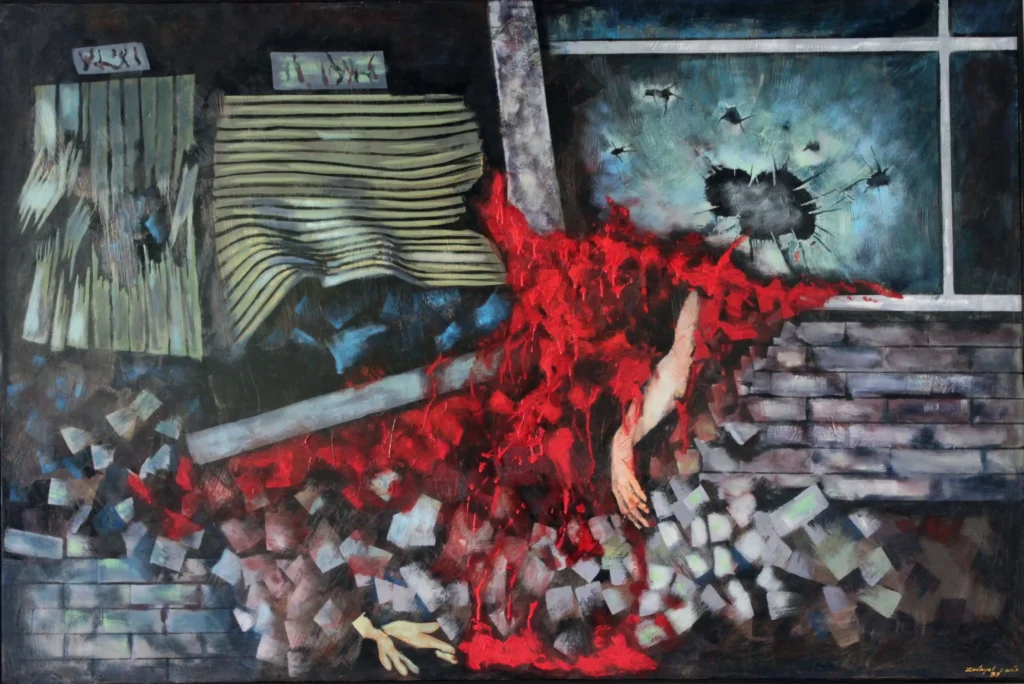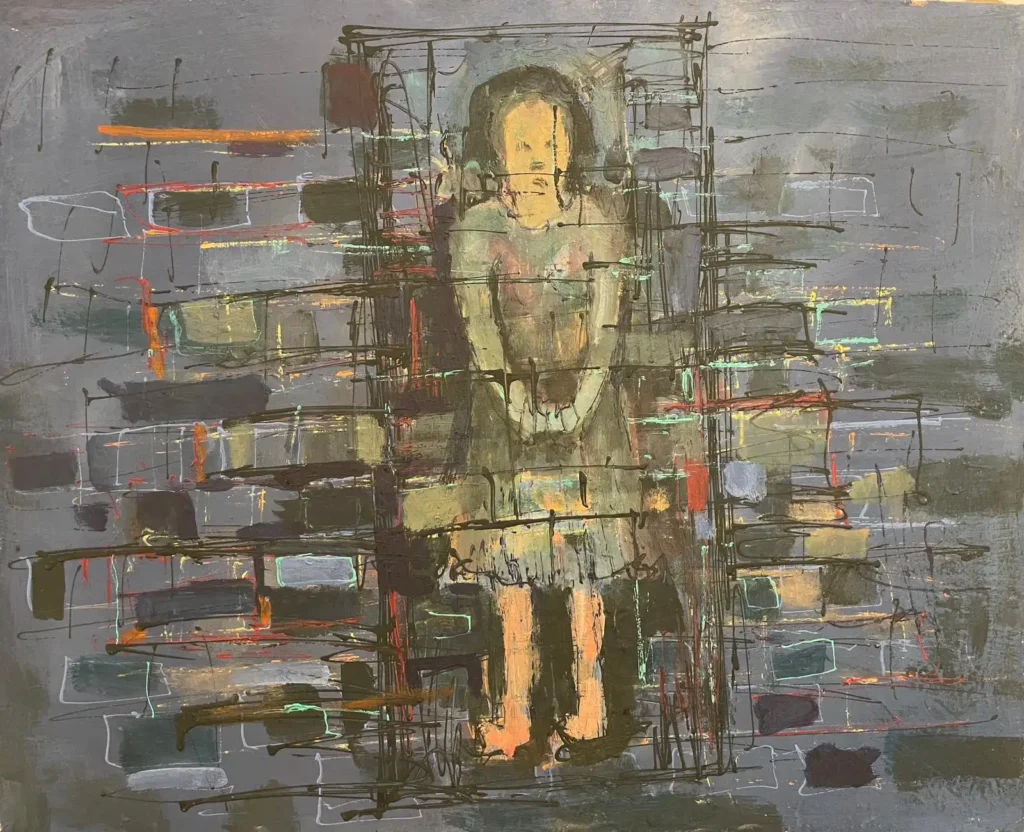At home, my father never talked about the “Farhud.” Not a word. The first time I heard about the Farhud was when I watched a documentary written and directed by Yitzhak Halutsi on the subject. In the film, my father — the abstract painter Nessim Zalayet — told his story, which I heard for the first time in my life. He spoke about the panic and fear, about robbery and humiliation, about people lying dead or injured in the streets, and about his father (my grandfather) running through the streets, shouting his name, searching for his eldest son amidst the chaos. My father spoke in the film against a backdrop showing the paintings he had drawn of the Farhud.
When I started organizing his collection of paintings as he requested, I arranged the numerous works he had created over the years. They had piled up in a large room in my parents’ house, transforming it into a home gallery that regularly showcased his artwork. That’s where I also saw the paintings of the Farhud. Among them were three large and impressive paintings that accurately conveyed the feelings of fear and horror my father experienced during that event. These were the only paintings he made of his life in Iraq. They were also the only paintings, to the best of my knowledge, created by someone who was present during the Farhud.
Over time, I learned that my father had promised himself and others to document the Farhud through his artwork, but he didn’t fulfill this promise for many years. In the 1980s, his friend, the journalist Salim Fatal, reminded him of his promise and requested that he fulfill it. My father responded to the request, painted the paintings, and considered the matter closed from his perspective. He spoke very little about it, and when asked about the Farhud, he would only talk about it in connection to the three paintings he had created.
In 2016, when I finished photographing and cataloging all of my father’s paintings, I realized that one painting was missing. It was a painting that also had appeared in the documentary film about the Farhud. It depicted his younger sister hiding from the intruders inside a closet in their house. I asked my father about it and he said it was a poorly done painting so he threw it away. After some time, I asked him again, and his response was that the painting didn’t exist. On that occasion, he asked me not to bring up the subject anymore.
Several years passed and my father, nearing his 100th year, moved to a nursing home. I remained to organize, clean, and arrange his studio. One day, in 2021, while tidying up a storage room filled with various items, among old frames, rolled-up sheets of paper, and old fabrics, I found it! I found the fourth painting, the one he had started but never finished. He didn’t throw it away; he merely hid it in the storage room.
And one sentence my father said at the end of the documentary film stayed with me. This sentence encapsulated everything: “Since then, I’m afraid to stay alone at home at night.”





